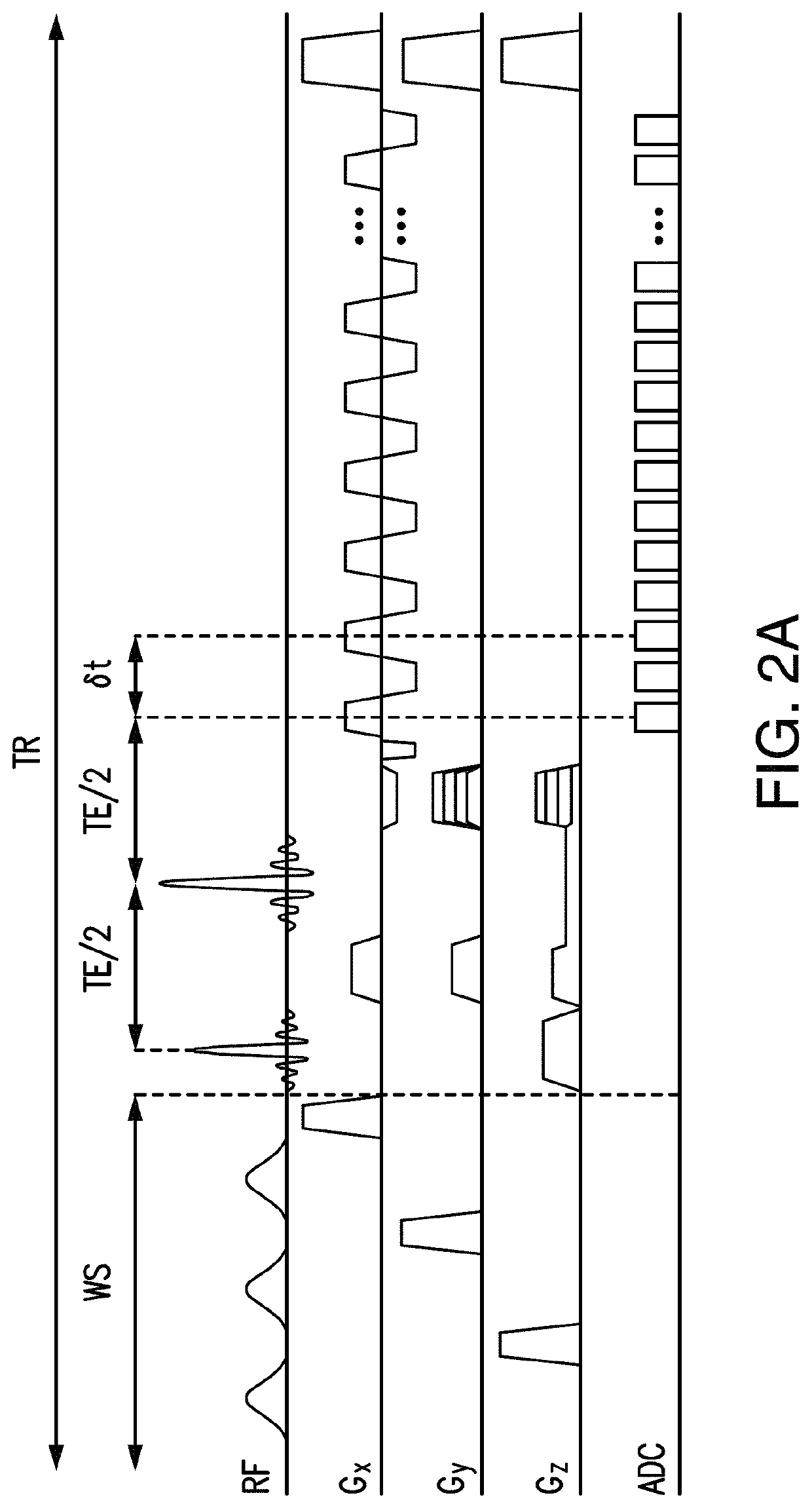System and method for ultrafast magnetic resonance spectroscopic imaging using learned spectral features
a magnetic resonance spectroscopic and learning technology, applied in the field of magnetic resonance spectroscopic imaging, can solve the problems of slow development of research and clinical applications, poor linear fitting method, and inability to provide the signal-to-noise ratio (snr), resolution and speed, and the current mrsi method is still far behind in providing the signal-to-noise ratio (snr)
- Summary
- Abstract
- Description
- Claims
- Application Information
AI Technical Summary
Benefits of technology
Problems solved by technology
Method used
Image
Examples
Embodiment Construction
[0035]Embodiments are directed toward a method and apparatus to enable ultrafast, high-resolution MRSI.
[0036]In one or more embodiments, spectral features of MR-detectable molecules (e.g., N-Acetylaspartate, Creatine, Choline, Glutamate, Glutamine, Myo-inositol, Glutathione, GABA, Lactate, Taurine, Aspartate in 1H-MRSI experiments or Phosphocreatine, ATPs, Inorganic phosphate, NADH, Phosphomonoesters, Phosphodiesters in 31P MRSI experiments) are predetermined (or learned) and used to calculate the spatiospectral distributions from measured MRSI data.
[0037]In one or more embodiments, spectral features of MR-detectable molecules will be learned from a set of “training” data acquired a priori, taking into account the resonance structure of each compound, which can be predetermined based on MR physics (using quantum simulation, for example) and the data acquisition scheme used.
[0038]In one or more embodiments, “training” data for metabolites can be obtained using, single-voxel (SV) scan...
PUM
| Property | Measurement | Unit |
|---|---|---|
| voxel size | aaaaa | aaaaa |
| static magnetic field | aaaaa | aaaaa |
| magnetic field | aaaaa | aaaaa |
Abstract
Description
Claims
Application Information
 Login to View More
Login to View More - R&D
- Intellectual Property
- Life Sciences
- Materials
- Tech Scout
- Unparalleled Data Quality
- Higher Quality Content
- 60% Fewer Hallucinations
Browse by: Latest US Patents, China's latest patents, Technical Efficacy Thesaurus, Application Domain, Technology Topic, Popular Technical Reports.
© 2025 PatSnap. All rights reserved.Legal|Privacy policy|Modern Slavery Act Transparency Statement|Sitemap|About US| Contact US: help@patsnap.com



